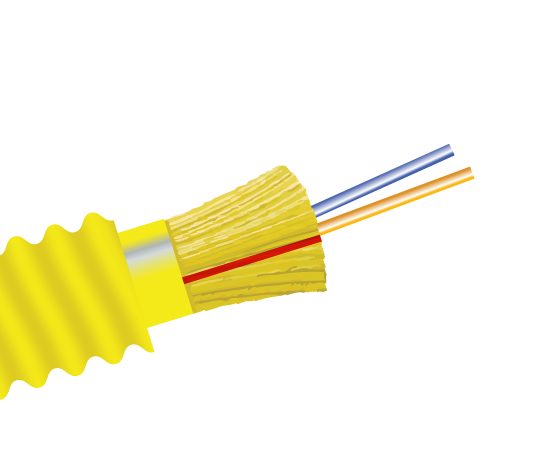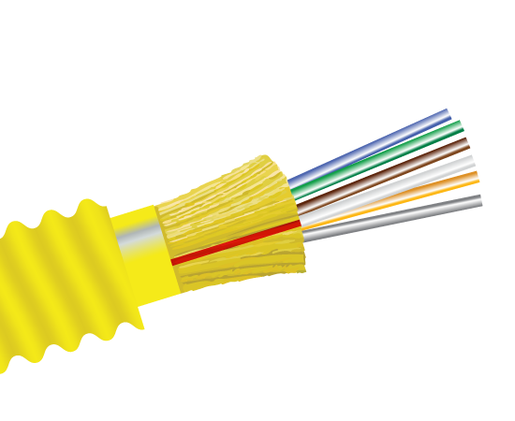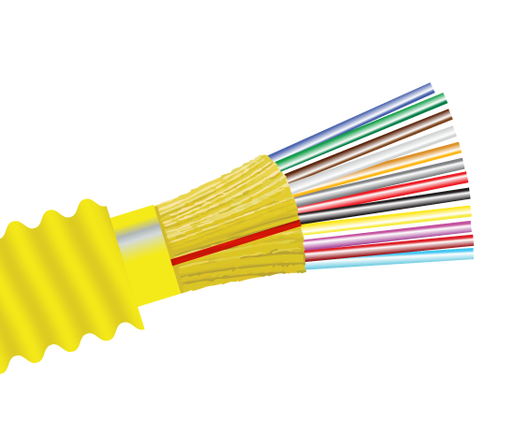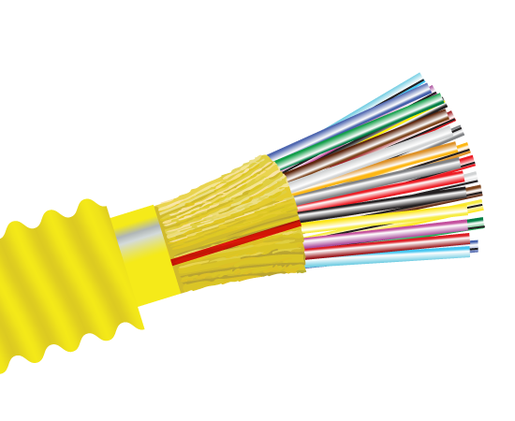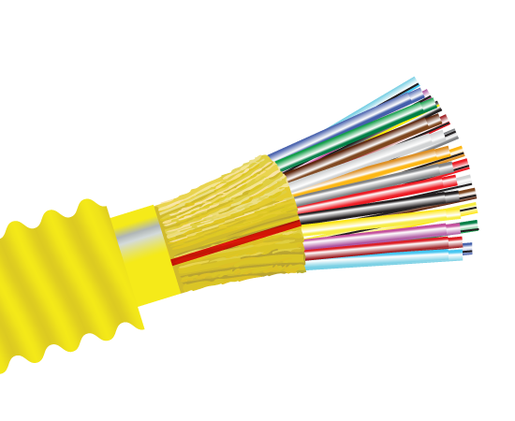Armored Riser Fiber Optic Cable, Single Mode, Indoor/Outdoor Distribution


(We do not offer credits or returns for this item.)
For volume quotes or to inquire about our custom fiber cable options such as terminated ends, pulleyes, and custom cut lengths, please call or email us.
Please call for shipping quote
Description
Single Mode, 9/125, Aluminum Interlocking Armored Distribution Cable, OFCR Riser Rated, Indoor/Outdoor, Price Per Foot
This armored riser fiber cable is ideal for industrial and other installations requiring a metallic armor and has a greater flexibility than standard corrugated steel-armored (CST) cables. The interlocking preloaded armor may eliminate the need for conduit, reducing installation costs. The interlocking armor can be easily removed leaving an intact inner riser rated cable for installation into building risers or from floor to floor.
Applications- Ideal for industrial and other installations requiring a metallic armor
- Interlocking preloaded armor may eliminate the need for conduit, reducing installation costs
Cleaning your fiber connector end faces and components regularly is crucial for avoiding a total network failure. Ensure your optical fiber system is working properly and prevent major network issues with fiber cleaning kits, pens, fluids, and wipes.
Features
Features
- UL Listed in accordance with NEC section 770.179(b) for use in vertical runs in building risers or from floor to floor
- Aluminum interlocking armor with PVC overjacket
- Interlocking armor can be easily removed leaving an intact inner cable
- Greater flexibility than standard corrugated steel armored (CST) cables
- Ideal for locations that require conduit for cable protection
- Wide operating temperature of -40™C to +85™C
Specifications
Laser Ultra-Fox™ Fiber Performance
| Fiber Code |
SLX |
|
Industry Standard Designation |
Low Water Peak Single-Mode ITU-T G.652.D |
| Core/Cladding Diameter (μm) | 9/125 |
| Wavelength (nm) | 1310/1550 |
| Maximum Cabled Attenuation (dB/km) | 0.5/0.5 |
| Primary Coating Diameter (μm) | 245 |
| Secondary Buffer Diameter (μm) | 900 |
| Zero Dispersion Slope (ps/nm2-km) | 0.092 |
| Proof Test Level (kpsi) | 100 |
Installation and Operating Characteristics
Inner Cable
| Installation | Operating | |
| Max Tensile Load | 3,000 N (670 lbs) | 1,000 N (220 lbs) |
| Min Bend Radius | 13.4 cm (5.3 in) | 8.9 cm (3.5 in) |
Outer Cable
| Installation | Operating | |
| Max Tensile Load | 1,350 N (300 lbs) | 400 N (90 lbs) |
| Min Bend Radius | 33.4 cm (13.1 in) | 25.1 cm (9.9 in) |
Mechanical and Environmental
| Inner Cable | Entire Cable | |
| Impact Resistance EIA/TIA-455-25A | 1,500 Impacts | 20 Impacts |
| Flex Resistance | 2,000 N/cm | 25 N/cm |
| Crush Resistance TIA/EIA-455-41A | 1,800 N/cm | 650 N/cm |
| Operating Temperature | -40°C to +85°C | 40°C to +85°C |
| Storage Temperature | -55°C to +85°C | -55°C to +85°C |
| Installation Temperature (actual temp. of cable) |
-10°C to +60°C |
0°C to +60°C |
| Flame Retardancy | UL Listed Type OFNR (UL 1666) and FT4 (CSA C22.2 No. 232) | UL Listed Type OFCR (UL 1666) and FT4 (CSA C22.2 No. 232) |
Cable Characteristics
Inner Cable
|
Jacket Color |
Black |
|
Jacket Material |
Indoor / Outdoor PVC |
| Buffer Material | PVC |
| Cable Weight | 67 kg/km (45 lbs/1000') |
| Cable Diameter | 8.9 mm ( 0.35 in) |
Outer Cable
|
Jacket Color |
Yellow |
|
Jacket Material |
Indoor / Outdoor PVC |
| Cable Weight | 239 kg/km (161 lbs/1000') |
| Cable Diameter | 16.7 mm ( 0.66 in) |
Single Mode Fiber Information
Single mode fiber cable (Synonyms mono-mode optical fiber, single-mode fiber, single-mode optical waveguide, uni-mode fiber) is a single strand of glass fiber with a diameter of 8.3 to 10 microns that has one mode of transmission. Single mode fiber has a relatively narrow diameter, through which only one mode will propagate typically 1310 or 1550nm wavelengths. Single mode fibers carry higher bandwidth than multimode fiber, but require a light source with a narrow spectral width. Single-mode fiber gives you a higher transmission rate and up to 50 times more distance than multimode. The small core and single light-wave virtually eliminate any distortion that could result from overlapping light pulses, providing the least signal attenuation and the highest transmission speeds of any fiber cable type.

